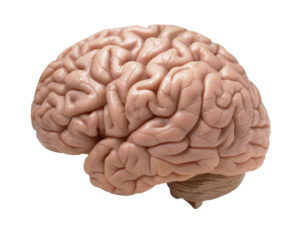 Something to ponder: Are tiny plastic particles (microplastics) that enter the human body traveling to the brain and causing harm? An article by the science writer Erica Cirino examines that question by looking at existing research and comes to the disturbing conclusion of: Yes, they are.
Something to ponder: Are tiny plastic particles (microplastics) that enter the human body traveling to the brain and causing harm? An article by the science writer Erica Cirino examines that question by looking at existing research and comes to the disturbing conclusion of: Yes, they are.
Yes, that plastic particles are inhaled or ingested (in food, water, and air), that many are excreted, but some travel to organs in the body, are absorbed in the bloodstream, and some eventually cross into the brain. Research in fish shows that this ultimately results in abnormal (dysfunctional) behavior. [Note: she is the author of the book Thicker Than Water, which addresses the plastics pollution problem.]
One problem is that plastic particles contain all the chemicals in the original plastic, which includes endocrine (hormone) disruptors. Another is that the plastic particles accumulate once they are in the organs. Yes, studies find plastic particles in humans (e.g., the placenta, the lungs, and other tissues) and also that many microparticles are excreted in feces. But much is still unknown.
A study by Canadian researchers estimated that the consumption of microplastics by Americans ranges from 39,000 to 52,000 particles (depending on age and sex) each year. When they added in inhalation of microplastic particles, the numbers increased to 74,000 to 121,000. And those who only drink bottled water may be getting an additional 90,000 microplastics (versus about 4000 microplastics from tap water). Yikes!
Since more and more plastics are entering the environment each year, then this does not bode well for humans. We need to deal with plastic pollution!
Excerpts from an article by Erica Cirino in The Scientist: Opinion: Plastic Pollution May Endanger Brains
In 1950, 2 million metric tons of plastic were produced globally; in 2015, petro-chemical companies churned out 381 million metric tons. Most plastic waste—more than 6.3 billion metric tons of it has been generated by humans over the last 80 years—is never recycled. And to scientists’ best knowledge, petroleum-based plastic will never biodegrade. Instead, it breaks up into ever-smaller particles that always remain plastic. ...continue reading "Microplastics Are Entering Our Bodies"

 Did you know that you are eating teeny tiny bits of plastic in your food every day? And inhaling the pieces floating in the air? These tiny bits of plastic are called microplastics, and are from all the plastic breaking down (degrading) in the environment. They have entered the food chain (e.g. from fish and other animals ingesting bits of plastic, food preparation, or from plastic packaging), and in this way we are also ingesting microplastics. They vary in shape and size, but some pieces can be so small that they can only be seen with a microscope.
Did you know that you are eating teeny tiny bits of plastic in your food every day? And inhaling the pieces floating in the air? These tiny bits of plastic are called microplastics, and are from all the plastic breaking down (degrading) in the environment. They have entered the food chain (e.g. from fish and other animals ingesting bits of plastic, food preparation, or from plastic packaging), and in this way we are also ingesting microplastics. They vary in shape and size, but some pieces can be so small that they can only be seen with a microscope.